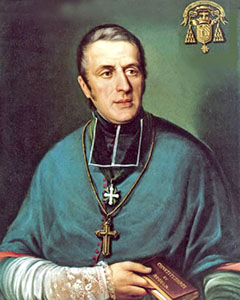Our Parish
Discover the heart of our parish–its mission, history, and the welcoming community that brings our faith to life every day.

Discover the heart of our parish–its mission, history, and the welcoming community that brings our faith to life every day.

St. Stanislaus Kostka Parish is the first Polish Roman Catholic church in Hamilton, Ontario. Its roots trace back to 1911, when a large group of Polish settlers arrived from Chicago, Illinois, joining the small but growing Polish community already in the city. Before the parish was established, many Poles worshipped at St. Ann’s English Church, where Polish priests – such as Rev. Pawel Sobczak – began making regular Sunday visits to serve the faithful in their native language. In May 1911, during a meeting between the Polish community and Bishop Thomas Joseph Dowling, the decision was made to establish a dedicated Polish parish. The bishop generously offered a parcel of land near St. Ann's Church for this purpose, and construction officially began on July 5, 1911.
Progress slowed during World War I, but the church was eventually completed and blessed by Bishop John Thomas McNally on October 16, 1927. In 1954, a new altar was installed, and the church was once again blessed following renovations. For over a century – from 1912 until June 2023 – the parish was faithfully served by the Congregation of the Resurrection. Since then, pastoral care has been entrusted to the Missionary Oblates of Mary Immaculate, who continue the mission of guiding and serving the parish community with dedication and devotion.

The story of the Missionary Oblates of Mary Immaculate began in 1816 in Aix-en-Provence, southern France. In the aftermath of the French Revolution, Eugène de Mazenod, a young priest from a noble family, saw how deeply the Church and its people had been damaged. With four companions who shared his vision, he formed a small community of priests dedicated to rebuilding faith among the poor. They called themselves the Missionaries of Provence and traveled from village to village preaching, hearing confessions, and renewing hope.
By 1826, their mission had grown, and Pope Leo XII formally approved them under the name Missionary Oblates of Mary Immaculate. Their reach expanded steadily. Eugène, who later became Bishop of Marseille, began sending missionaries to places where priests were scarce and the need was urgent.
In 1841, the Archbishop of Montreal requested help in Canada. Bishop de Mazenod sent six young Oblates across the Atlantic–their first mission outside Europe. In Canada, the Oblates worked in isolated and difficult regions, bringing the Gospel to settlers and Indigenous communities. Their efforts established a strong and lasting presence that continues today.
Meanwhile, after Poland regained independence in the early 20th century, Polish Oblates – many of whom had served Polish immigrants in Germany and Canada – returned home. In 1920, they arrived in Piekary Śląskie, and within a few years, the Polish Province was officially founded. Despite difficult conditions, their mission grew quickly, with new seminaries, houses, and vocations. Many Polish Oblates later served abroad, continuing the global work of the congregation.
By the time of Saint Eugène de Mazenod’s death in 1861, the Oblates numbered over 400, with missions in Europe, the Americas, Asia, and Africa. In the years that followed, they expanded further to Sri Lanka, Madagascar, Australia, and beyond. What began as a small group in southern France grew into a worldwide congregation united in its mission to serve the most abandoned.
Today, the Missionary Oblates of Mary Immaculate continue to live out their founder’s motto: